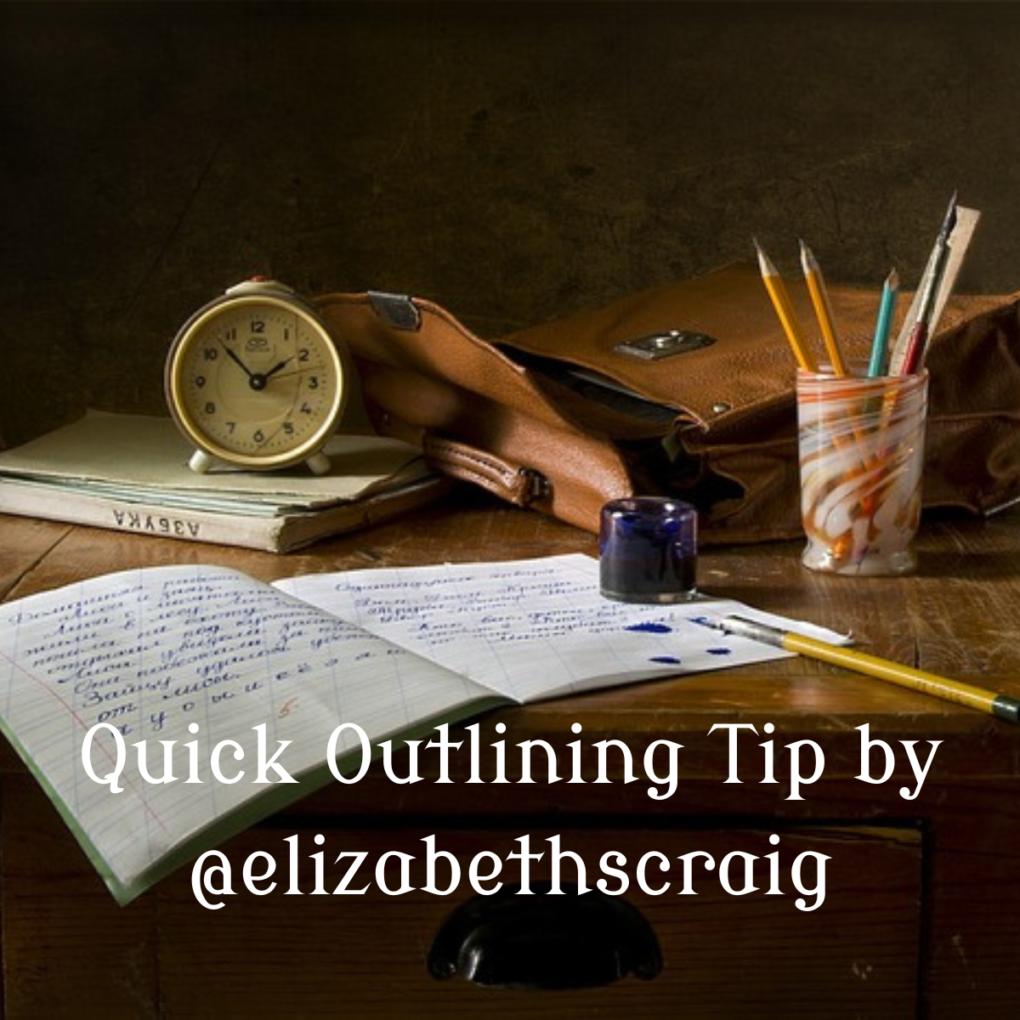by Elizabeth S. Craig, @elizabethscraig
Although I started out with a pretty antagonistic relationship with outlining, I’ve learned to both make my peace with it and to find ways to make it work for me.
The nice thing is that we can customize our outlines to make them more useful. Sometimes this means having just a bullet-pointed list of where the story is going next. Sometimes it means sketching out entire scenes throughout the book.
I write five or six in-depth outlines every year. Each time I’ve tried to make them more useful to me when I’m using them. They’re supposed to function as tools, after all, and figuring out ways to make them work harder for me is definitely worth it.
My latest discovery is that I can use my outline to help me move faster through the toughest scenes for me to write. My toughest scenes vary. They used to be endings, for instance. Now, for two out of my three active series, the toughest things to write are my transition scenes and my subplots.
Whatever the area of concern is, I make sure to focus on it while creating my outline. For transition scenes and subplots, for instance, I’ll first brainstorm possible subplots and tie-ins to the mystery, then I’ll add them in as much detail as possible in the outline.
This helps in a couple of different ways. For one, it helps me move faster through my manuscript. If I know I take twice as long writing those scenes, an outline really helps me move quickly through it. For another, it gives me confidence that I won’t run into time-consuming issues when I start to write. That confidence ensures that I’ll be eager to open up my laptop the next day and start another writing session.
For more on how I use outlines, see:
Lengthening a manuscript in a meaningful way.
Using them as cheat sheets before speaking to a book club.
Do you outline? What’s your process for planning a book?
Using Outlines to Help With Your Problem Areas: Share on XImage by Лариса Мозговая from Pixabay

I tend to outline to death, but subplots are not my strong suit. I need to focus on those more in my outlines.
Honestly, they’re the weakest parts of my books. Outlining is helping me out.
Thanks for the outlining tips. I can't outline a whole book but am recognizing the need to have a better outline to write faster. I'll use your tips when I start my next manuscript.
Good luck with your next project!
Outlining really can be helpful, Elizabeth. I have to admit, I don't outline every part of what I write. But as you say, outlines can be very flexible, so you can use them in ways that are helpful, without being limited.
That’s the best thing…they give us a road map, which we can follow or reinvent along the way.
That's a good idea to work through issues in an outline rather than when you're writing. I've always used outlines.
It takes so much longer to fix problems along the way in the manuscript, doesn’t it?
I absolutely use an outline. I use one because my ADD is my worst enemy. Outlining helps me stay on track and also after I finish chasing my "butterflies" return to the outline and move on.
Thanks for the new idea. It makes sense, and I will use it.
Teresa
I’m still a reluctant outliner, but it works so well for me! Hope the new idea works. :)
Great idea! That would help break the hard parts down into manageable bites.
Hope it helps!